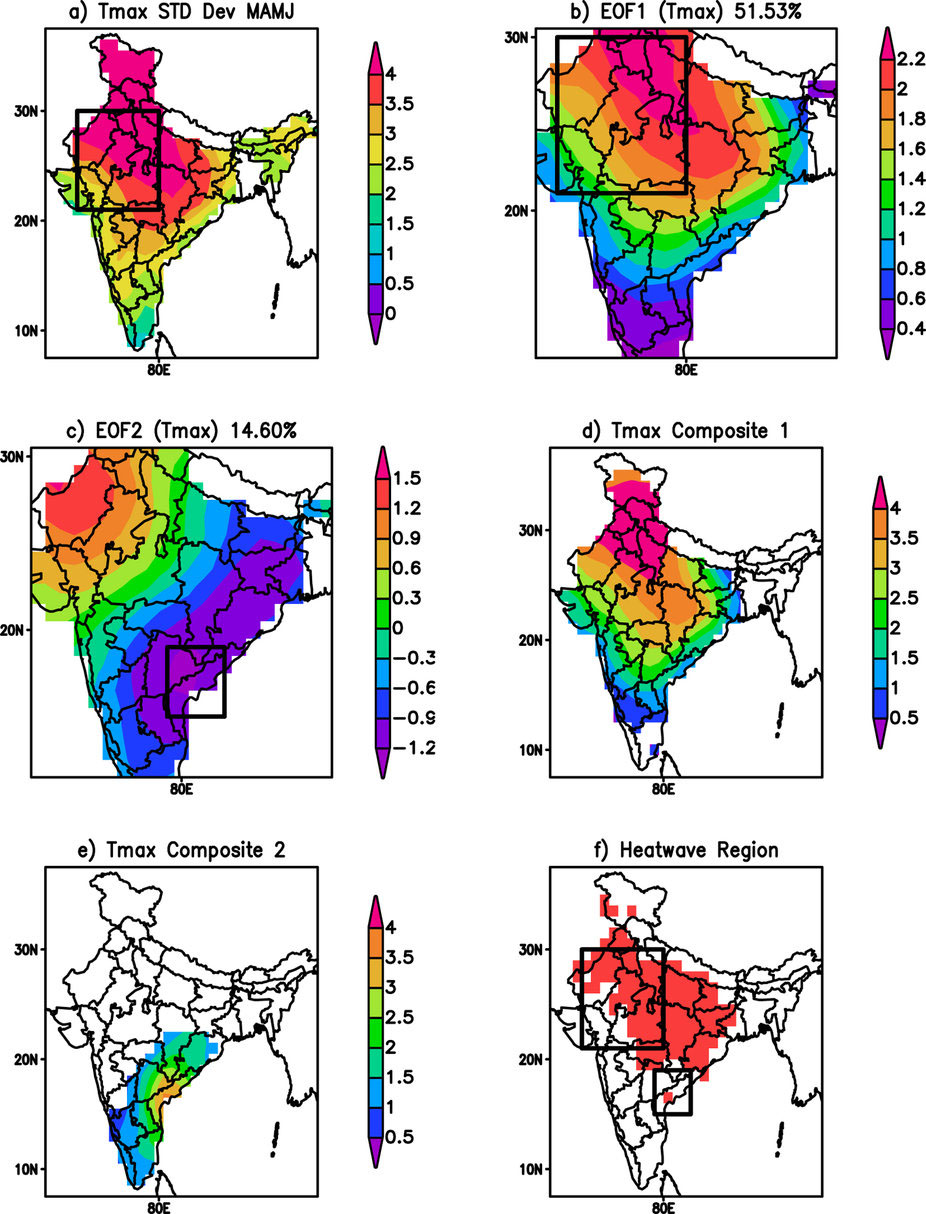Research Abstract
インドの熱波の解剖
Anatomy of Indian heatwaves
2016年4月15日 Scientific Reports 6 : 24395 doi: 10.1038/srep24395

3月から6月の間、インドは熱波の影響を強く受ける。最近数十年の強い熱波の増加は、主に地球温暖化が原因とされてきた。熱波は人間の死亡率に重大な影響を与えるため、これらの熱波の根本的な原因を解明する必要がある。最高気温の変動に関する観測分布と統計解析に基づき、我々は2種類の熱波を同定した。北部および中部インドにおける第一のタイプの熱波は、北大西洋上空のブロッキングと関連していることが分かった。北大西洋上空のブロッキングは、北アフリカの西側の大気上層で低気圧循環の偏差を引き起こす。これに伴う渦度の伸長によって、アフリカジェットの入口付近で、大気のロスビー波が励起される。ジェットに沿う準定常ロスビー波の波列はさらに、インド亜大陸上空で高気圧循環の偏差を生じ、下降気流によってインドで熱波の状況がもたらされる。一方で、インド東部の沿岸域上空での第二のタイプの熱波は、太平洋の低温偏差に対する、大気の松野-ギル型応答に起因することが分かった。松野-ギル型応答は大陸上で北西風の偏差を生じ、海陸風を弱めることで熱波をもたらす。
Corresponding Author
India suffers from major heatwaves during March-June. The rising trend of number of intense heatwaves in recent decades has been vaguely attributed to global warming. Since the heat waves have a serious effect on human mortality, root causes of these heatwaves need to be clarified. Based on the observed patterns and statistical analyses of the maximum temperature variability, we identified two types of heatwaves. The first-type of heatwave over the north-central India is found to be associated with blocking over the North Atlantic. The blocking over North Atlantic results in a cyclonic anomaly west of North Africa at upper levels. The stretching of vorticity generates a Rossby wave source of anomalous Rossby waves near the entrance of the African Jet. The resulting quasi-stationary Rossby wave-train along the Jet has a positive phase over Indian subcontinent causing anomalous sinking motion and thereby heatwave conditions over India. On the other hand, the second-type of heatwave over the coastal eastern India is found to be due to the anomalous Matsuno-Gill response to the anomalous cooling in the Pacific. The Matsuno-Gill response is such that it generates northwesterly anomalies over the landmass reducing the land-sea breeze, resulting in heatwaves.

